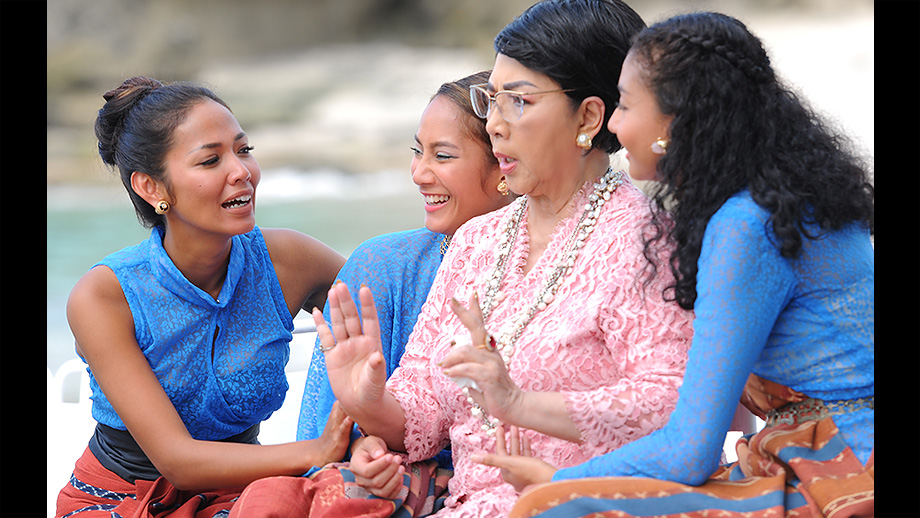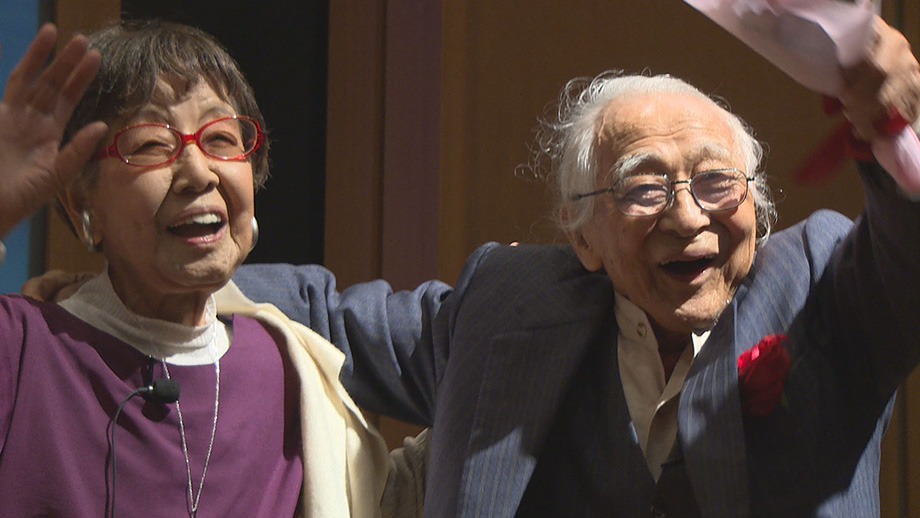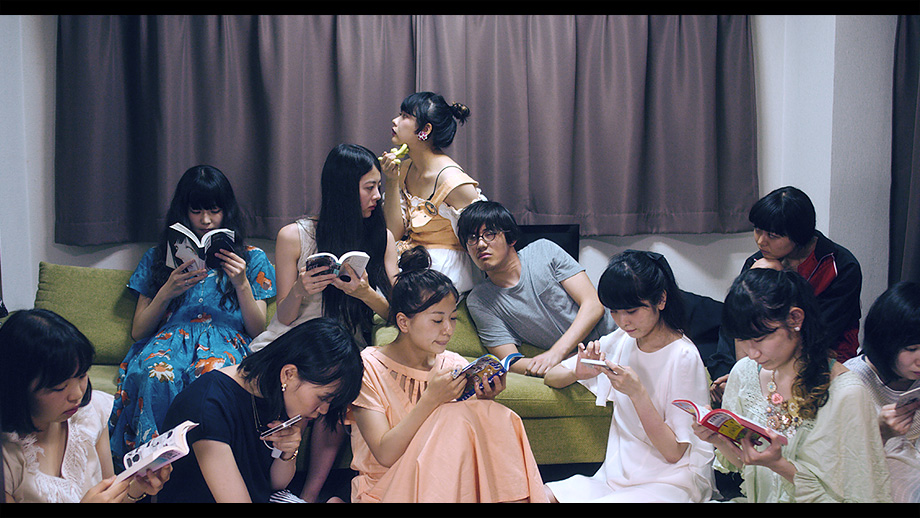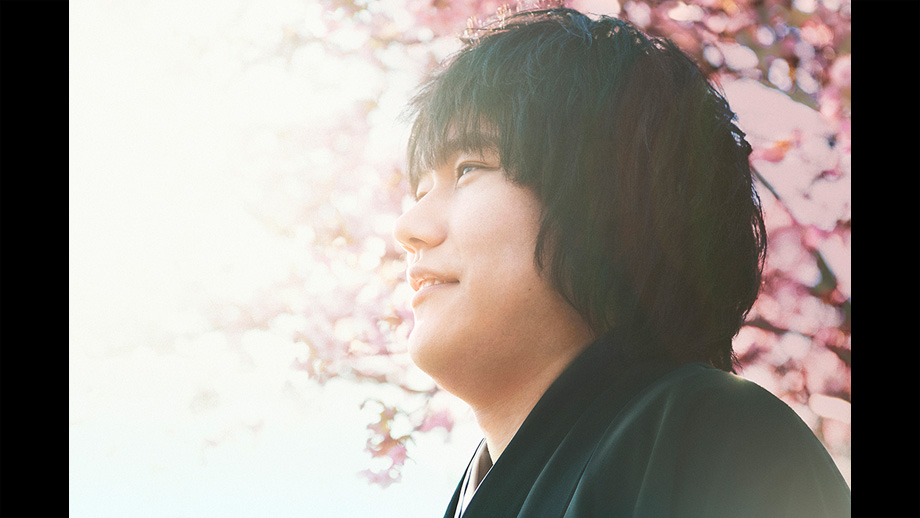REWIND FEATURE: Tokyo International Film Festival 2016
TIFF 2016 - Part Three: The Movies Watched
Of the more than 150 films screened at the 29th Tokyo International Film Festival, I was able to catch a total of 16 when also including short films. I’ve already discussed briefly about the special screening of “A Bride for Rip Van Winkle”, the opening day film “Florence Foster Jenkins”, and the two short films “Moom” and “The Dam Keeper”. In addition to those, here is a list of twelve other films I was lucky enough to watch during the festival.

“76 Minutes and 15 Seconds with Abbas Kiarostami” / ”Take Me Home - Abbas Kiarostami” (Iran, 2016) (World Focus)
It was a sad loss in world cinema when Iranian director Abbas Kiarostami passed away on July 4th of this year at the age of 76. Although he started directing features in the late 1970s just as the fundamentalist revolution changed his nation, Kiarostami directed films with an individualistic tone and style while still under the contains of the new regime. With films such as “Close-Up”, “The Taste of Cherry”, and “The Wind Will Carry Us”, his films showcased to the world of the new wave of Iranian cinema - a taste of beauty and importance of the people of Iran rather than what the news media provided. His last two films “Certified Copy” and “Like Someone in Love” were his first filmed outside of Iran and in languages other than his native Persian (Farsi), which excited world film fans for a new chapter in Kiarostami’s career. “76 Minutes and 15 Seconds with Abbas Kiarostami” was directed by Seifollah Samadian, a documentary filmmaker and occasional cinematographer for Kiarostami’s films. The film is made entirely out of behind the scenes footage of his films, casual interviews, and random home videos. The behind the scenes includes Kiarostami trying to recreate the sound of ducks walking on sand along a beach with simple foley, the director writing meticulous notes for the films, and more, while there are scenes of the director driving through the snow covered landscape in Iran to take photographs of animals and nature. While this is not a definitive documentary on Kiarostami’s life it is a glimpse into his creative process and also his casual sense of humor and hospitality. He truly will be missed and his films will be cherished for years to come.
In addition to the main documentary feature, a curious 15 minute short film entitled “Take Me Home - Abbas Kiarostami” was screened prior. In bold black and white photography, it follows a boy’s soccer ball that rolls from the steps leading to his house down endless corridors, alleyways, stairwells, and terraces. At first I had no idea what was going on. I assumed this was a documentary about Kiarostami but I was watching a film with a pretty fake looking soccer ball rolling on screen. I was wondering “Is this going to last for 76 minutes and 15 seconds? Really?!” Gorgeous music helped to ease the confusion but by the end, it all made sense with the credit: “Photographs by Abbas Kiarostami”. All the shots from the film were stills taken by Kiarostami, and the CGI ball was used to connect the pictures together. Granted I felt in hindsight that the ball was not necessary at all. The pictures were gorgeous to begin with. But it showed the director had a keen eye for photography of architecture as well as the way he framed and photographed people for his feature films.

“Ode to Time” (Taiwan, 2016) (Asian Future)
Trailer
Folk music burst on the American music scene in the 1960s and continued to influence on a worldwide scale, including Taiwan where folk music and Western culture grew in popularity in the 1970s with the younger generation. Through political turmoil in the 1970s with Taiwan’s relationship with China and other countries, the cultural identity of the people, and the movement of artists changed the musical landscape of the island nation. 40 years after the musical movement, an anniversary concert is held with many of the performers reuniting and singing on stage for the first time in many years for a large area audience.
Folk music has always been the music of quiet peaceful protest from Woody Guthrie to Simon and Garfunkel, and the influence is worn strong by the Taiwanese performers shown throughout the film. Cutting back and forth between interviews and candid footage of the musicians along with the concert performances, it is a partial document of the concert and presenting the audience with the performers speaking their stories of the past. The original Chinese title is simple “40 Years” and it is also filled with documentary footage of protests, vintage television performances, and rare photographs of many forgotten musicians. One of the most important songs of modern Taiwanese music “Descendants of the Dragon” (1978) is showcased, which has been covered by many Taiwanese singers as it is almost a national anthem for modern Taiwan. The film does a good job of explaining the history, who the performers are, and the meaning behind the movement for people unaware of the music or with Taiwanese history. Though possibly on a downside, there could have been a bit more time to showcase the concert itself and the thoughts of fans who were there.

“Three Sassy Sisters” (Indonesian, 2016) (Colorful Indonesia)
Trailer
Prior to watching this film, I admit I was not familiar with the 1956 Indonesian film “Tiga Dara” that is was based on, one of the most enduring and popular films in Indonesian cinema. The original film was a musical comedy film and I also admit that I had never seen an Indonesian musical comedy. And now with the remake screened at the festival, I am glad to say I have now seen and Indonesian musical comedy and it was a pure delight to see.
The plot involves a family which owns a hotel on an island resort. With the three sisters - the eldest is the most stubborn and is not interested in men but more about the business side. The second sister is interested in marriage but their grandmother would like it to be traditional - having the eldest marry first. The youngest is in love with a half-British boy her age and their hands-on-each-other approach nearly gives grandma a heart attack. Of course the music is the highlight of the film with the singing and choreography. The music is surprisingly more western oriented rather than traditional, with even one song being in English entirely and one song being influenced by Spanish Flamenco. The story itself is a little on the predictable side of a rom-com, but for people wanting something colorful, musical, and silly, it is very well made, well performed, and an extravagant good time. With a western style and dialogue with a mix of Indonesian, Javanese, and English, it’s bound to strike a chord with non-Indonesian audiences.
In addition, the original 1956 “Tiga Dara” has recently restored in 4K and will have a Blu-ray release in 2017. The original trailer is here.

“I America” (The Philippines, 2016) (Asian Future)
Trailer
Erica is a 27 year old aspiring actress and model who was born and raised in the Philippines. In recent times she has been connecting online with the man that is said to be her father - John Berry, an American who recently found out about her. He longs for Erica to move to the United States so he could start a fresh relationship with a new daughter while Erica questions whether she should move to America or not. But when she finds her birth record says “Perry” instead of “Berry” as her father’s name, her dreams start crumbling knowing that John is not really her father.
“I America” may seem like a crushing drama filled with heartbreak, it is also one with a lot of comedy. The camaraderie of Erica with her best friends are filled with silly moments (like the “Destiny’s Children” comments and the chocolate truffles pasta scene), with naturalistic dialogue and a documentary feel with the freeflowing handheld camerawork. The film is a close look at the balance of cultural identity and personal identity. The Philippines has a history of colonialization and occupation making their own history and culture more of a mix of others rather than just their own, and with the thousands of islands and local cultures within the country, what does it really mean to be Filipino? And for half Filipinos growing up like Erica - without the other parent who was non-Filipino, there is a bigger question for them on who they really are and what their cultural identity is. Erica’s longing to find her father is her own individual plight, but she is not alone as the film shows. “I America” - or also possibly read as “I Am Erica” is one of the highlights of the festival being emotionally hard hitting while being funny and heartfelt.

“Two Journalists: One Century” (Japan, 2016) (Special Program)
Takeji Muno was a journalist during WWII, at a time when the government heavily suppressed information and silenced media as a propaganda machine. Following Japan’s defeat, Muno decided to resign from his position at the paper to go on his own - to make a newspaper independently with true articles for the people and by real journalists doing real writing, and to continue free journalism. Tsuneko Sasamoto was the first female photographer and her journalism work focused on both famous people and everyday people. The common point between these two people was not only the journalistic background, but that they are both centenarians - at 101 years old.
The Japanese title is literally “Smiling 101 Year Olds x 2: Tsuneko Sasamoto & Takeji Muno” - these two souls have seen Japan from the time of pre-war to the modern era, and both of them were sharp and pins with their wit, their smarts, and their memories even at their elderly age. The film features interviews with the two talking about their lives from their childhoods until their more recent work (yes, work!) and also the heartfelt time that the two met for the first time - when they were already in their 90s. In addition, Sasamoto turned 102 on September 1st while sadly Muno passed away on August 21st 2016 at the age of 101.

“Flocking” (Sweden, 2015) (Youth)
Trailer
Jennifer is a 14 year old who claims that classmate Alexander raped her which causes scandal and division at school. Alexander is a well-liked popular boy with many friends and a reputation, while Jennifer is an outcast so she is called a slut and bullied even further by others who do not believe her. It’s not only the school, but bullying spreads with her parents being harassed, and her younger sister being punished by the townsfolk, even turning violent.
“Flocking” shares similarities to “Carrie” in terms of the bullying aspect and cruelty but this is more with the realistic aftermath of a rape charge and how it affects not only the victim. During the course of the film the audience is not quite sure if Jennifer is telling the truth or not so it is not only the characters taking sides but it does question what the audience to think which is quite intriguing. Possibly the film’s downfall comes from its ending - which does not have a clean resolve and only makes things bleaker. Maybe that was the purpose? For me the end credits left me wanting to see an actual ending rather than where it finished.

“Canola” (South Korean, 2016) (Asian Future)
Trailer
Hye-ji is a 5 year old girl living with her guardian - her grandmother Gye-chun on Jeju Island, but one day while shopping, the two get separate. Gye-chun searches for her but years pass by with no word on what happened to her granddaughter. 12 years later, a girl comes forward saying she is Hye-ji and it was her birth mother that snatched her at the marketplace those many years ago. Gye-chun is reunited with her and they are to start all over again. But for the older Hye-ji, the island life is unlike her many years in Seoul, giving frustration and trouble.
“Canola” was easily one of the best films I had seen at the festival. It is tearful, funny, and also mysterious. The story has its dramatic twists such as the audience beginning to question if the girl that returned was really Hye-ji or not, or the consequences that she must deal with in her past. All is revealed in the film and I must say that I was intrigued and genuinely surprised at the big reveal, but the film is more than just a twist or one that messes with expectations. The heart and soul of it is the big draw and it certainly brings the viewer in tightly.

“Same Old, Same Old” (Japan, 2016) (Japan Cinema Splash)
Trailer
“Same Old, Same Old” is anything but the same old story. This is a film I wanted to like for its execution but it just did not click with me and the audience also seemed a bit confused at what it was going for. First of all the film had a large amount of subplots - an amateur director getting a job as a music video director who is on the verge of breaking up with his girlfriend. A police officer who finds out information on her ex-boyfriend who has been missing for years, a young girl moving from her small town to a larger city, a brother learning about what happened to his twin brother, a woman visiting the hometown of her ex who recently committed suicide, etc etc etc. Things seem unrelated, but they are in fact related. One character from one subplot appears in another and it shows how connected things are. But this is not “Burn After Reading” or any Robert Altman movie - it is inconsistent on tone and that is what makes it frustrating. The first portion was actually funny - the dark comedy was making people laugh in the audience, but later on things were weird, creepy, or just plain confusing. The laughs were basically gone after about 30 minutes though it did return when the characters from the beginning were there to wrap things up - but it was not enough to save the film.
At any film festival there are bound to be disappointments. “Same Old, Same Old” unfortunately falls into that category. It interestingly tried to be different but it did not succeed in being something good.

“Satoshi: A Move for the Future” (Japan, 2016) (Special Screening)
Trailer
Satoshi Murayama was a young shogi phenomenon. After diagnosed with Nephrotic Syndrome as a child and having much time spent at the hospital, Satoshi learned how to play Shogi and continued playing professionally until his death at the young age of 29 in 1998. Based on a true story, the film chronicles Satoshi’s rise, his failing health, his match against the undisputed master Yoshiharu Habu, while also showing his very unbalanced and unhealthy lifestyle.
The Japanese board game of Shogi is the equivalent of chess, and like chess matches - professional play is at an extremely high level of gameplay surrounded by rigid rules and silence. While knowing the rules of the game make the film much more exciting, the best part about “Satoshi: A Move for the Future” is that the audience does not need to know the exact rules of the game to get into the story and follow the journey and downfall of Satoshi. Kenichi Matsuyama plays Satoshi and gained 20 kilograms to find the unhealthy role - although the real Satoshi Murayama was much bigger due to Nephrotic Syndrome. Sad as it was that the real Satoshi died so young, the film has many comical moments that will keep people smiling - and possibly an interest to pick up a Shogi board to play. This film was the closing film of the Tokyo International Film Festival.

“Quit Staring at My Plate” (Croatia, 2016) (Competition)
Trailer
Marijana does not have an easy life. The 24 year old lives with her family - a lazy brother, a strict abusive father, and an uncaring mother. But after the father suffers a stroke, she suddenly feels freedom from the repressive life that she had - but she does not know what to do with it.
Director Hana Jušić won the director’s prize at this year’s festival with “Quit Staring at My Plate” which was a good choice in terms of directing - but this was a very hard and cruel story with no real happy ending. The character wants to be loved, but doesn’t know how to achieve that. Marijana’s downfall to practicing unsafe sex with strangers and generally losing care about herself is heartbreaking but the director did state that she is not interested in making audiences happy - but making audiences feel something, whether good or bad.

“About a Woman” (Indonesia, 2014) (Colorful Indonesia)
A widow in her 60s lives in a grand house with her housekeeper Elly, but when Elly decides to return to her hometown it leaves the woman alone. Her daughter urges her to move out of the house and live with her family, but she declines as she does not want to leave the grand house. The son-in-law is also for it but to help out with the situation of the housekeeper, and so he sends his young nephew Abi to help with the housework for the time being. While she is concerned that a boy a third her age can do the job, she slowly starts to accept him with the work, but unexpectedly even something sexual in thoughts.
“About a Woman” is almost entirely shot inside the house with the only times we see the woman outside is when she walks to the outdoor poolhouse which is on the same property. It certainly is well directed showcasing that the world of hers is entirely walled in - and we are rarely seen glimpses of the outside but not making things claustrophobic - but more of a sense of comfort that home is comfortable while the outside world isn’t. While the film moved in an interesting direction similar to such works as “All That Heaven Allows” and its remake “Fear Eats the Soul” with an elder woman finding a sexual awakening from a younger man, but it’s too little too late. When things are just getting started it seems the movie finishes prematurely (like the boy?).
Due to scheduling conflicts, there were a lot of films I was not able to catch. “Arrival”, “Lipstick Under My Burkha”, The 4K remastered editions of “Ugetsu Monogatari”, “Floating Clouds”, “Virus”, and “King Kong VS Godzilla”, and so much more. Although 16 films in one week? Not bad I guess. It pales in comparison to the 30+ competition films that the five jurors had to watch during the same week. Overall, got to see some great films and some not so great ones. There certainly is a difference in watching movies on a screen at a festival rather than a standard screening or at home. The people there are there for the love of cinema and to watch with a large audience of people that appreciate that is something that cannot be replicated elsewhere easily.
